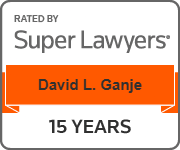Surface Water Rights and Surface Water Drainage, A Modern Problem
Surface Water drainage issues are longstanding issues in agricultural production areas, and have a significant effect on the agricultural economy of a state. South Dakota, by way of example, has been plagued by surface water drainage problems for decades. Surprisingly, there is little coherent or efficient planning to meet the challenge. Instead, property owners and government agencies have witnessed debates, numerous court cases, and the failure of new legislation capable of addressing the issue. The state has experimented and over the years implemented a smorgasbord of agencies with authority over water issues including the State Water Management Board, County Drainage Commission statutes, irrigation districts, water user districts, water project districts, water development districts, conservation districts, and watershed districts. The results are less than successful when one considers the state’s drainage problems. There are benefits to water drainage, both environmentally and economically. However, the road to effective water drainage law and policy remains elusive in South Dakota, partly due to the unwillingness of those in authority to exercise existing rights given to the state’s leaders.
Surface water drainage is defined as the depletion of water from a water-logged piece of land. By draining off excess water, soil goes from saturated to unsaturated, allowing air to better move through the soil, making it healthier. This can result in a decreased amount of runoff and topsoil loss with water drainage, also improving soil quality. By making the soil healthier, crops are healthier, more abundant, and typically generate better profits.
Water drainage is beneficial environmentally as well as economically. Studies done by North Dakota State University indicate that there is a 30-50% yield increase in fields that have added tile drainage systems. This yield change increases revenue, as well as the quality of the land in general.
Despite the evidence that supports water drainage systems, dispute about the benefits remain, including the questions: How does one drain the water? Where should it go? And how much is too much?
A few Water Rights concepts, such as the Civil Law Rule, should be considered. The Civil Law Rule states that a lower estate is responsible for the water that naturally drains across it, and whatever trouble that may come with it – however, an upper estate cannot lawfully do anything to increase this burden. This means that an upper landowner cannot add to the natural volume of water the lower landowner would naturally receive, or change the course of the water’s flow. These principles have been demonstrated and applied in numerous court cases.
For example, in the 1909 South Dakota case of Boll v. Ostroot, in which the defendant dug a ditch to drain water onto the plaintiff’s lower lands, the court ruled that the defendant could not lawfully discharge water onto another’s land through an artificial channel. In addition, it was also ruled that one could not change the natural course of the water’s natural drainage path.
More recently, the 1985 case of Gross v. Connecticut Mutual Life Insurance Co. held that discharge is allowed over, but not onto another’s land. The principle is that drainage can flow but not in such a manner as to create a new water depository. The precedents and general guidelines set by these court cases are not enough to combat all of South Dakota’s water drainage issues.
Part of the problem lies in South Dakota’s 1985 water drainage statutes which offer guidelines such as when permits are needed, the application process, coordinating precise drainage areas, and so on. The law allows for both creating drainage plans and managing drainage controls. While this may have been effective in theory, in practice it falls short. For example, the manpower, data, and resources necessary to carry out all that the ordinance calls for are not widely available and are often given as the reasons for the failure of counties to administer the law. The more accurate reason is that political leaders at the county level are reluctant to take the bull by the horns and ‘domesticate’ the water drainage issues. In addition, as of July 2012, only 18 out of 66 counties in South Dakota had a drainage ordinance in place, making it nearly impossible for the state as a whole to deal with all the complications that can arise.
With all the problems that water drainage and water drainage laws have brought up, what can be done to remedy and alleviate the situation? Fortunately, there are many options for South Dakota. To start, a minimum criteria needs to be established for drainage applications to act as a baseline for what is lawful. Following that, more definitive criteria to evaluate these applications need to be made in order to best protect all parties involved. Finally, a level of cooperation and consideration among all parties involved needs to be more actively employed.
It is evident that water drainage laws have caused hardships and issues in South Dakota for many generations. However, by employing new standards and better understanding water drainage rights and tactics, South Dakota has the ability to overcome these hardships and improve the land.






